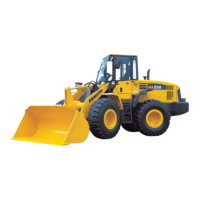.
PRECAUTIONS FOR CHARGING BATTERY
When charging the battery, if the battery is not handled correctly,
there is danger that the battery may explode. Always follow the
instructions in "BATTERY (PAGE 3-104)" and the instruction
manual accompanying the charger, and do as follows.
Do not use or charge the battery if the battery electrolyte level is
below the LOWER LEVEL line. This may cause an explosion.
Always check the battery electrolyte level periodically and add
distilled water to bring the electrolyte level to the UPPER LEVEL
line.
Set the voltage of the charger to match the voltage of the battery
to be charged. If the voltage is not selected correctly, the
charger may overheat and cause an explosion.
Connect the positive (+) charger clip of the charger to the positive (+) terminal of the battery, then connect the
negative (-) charger clip of the charger to the negative (-) terminal of the battery. Be sure to fix the clips securely.
Set the charging current to 1/10 of the value of the rated battery capacity; when carrying out rapid charging, set
it to less than the rated battery capacity.
If the charger current is too high, the electrolyte will leak or dry up, and this may cause the battery to catch fire and
explode.
If the battery electrolyte is frozen, do not charge the battery or start the engine with a different power source.
There is a hazard that this will ignite the battery electrolyte and cause the battery to explode.
STARTING ENGINE WITH BOOSTER CABLE
When starting the engine with a booster cable, do as follows:
PRECAUTIONS WHEN CONNECTING AND DISCONNECTING BOOSTER CABLE

